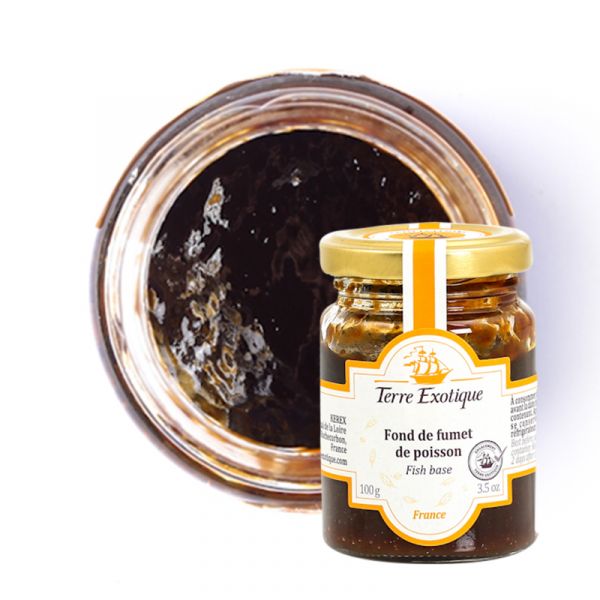



How to Use Fish Stock Base in Cooking?
Dissolve a little stock base in hot water. For a sauce base, mix 3 tablespoons with 1 liter of hot water. For a cooking base (such as soup broth, braised meat, or oven-baked dishes), add 2 tablespoons to 1 liter of water.
Some Recipe Ideas for Using Fish Stock Base
- - Fish Soup: Use the fish stock base as a foundation for homemade fish soup. Add fish chunks, seafood, vegetables, and herbs for a flavorful soup;
- - Seafood Risotto: Incorporate the fish stock base into cooking seafood risotto. Add shrimp, mussels, and squid for a richly flavored marine experience;
- - Scallop Skewers with Saffron: Marinate scallops in fish stock base, saffron, garlic, and olive oil. Thread the scallops onto skewers and grill them quickly. Serve with a lemon and parsley sauce;
- - Citrus-Marinated Fish Ceviche: Mix cubes of fresh fish with fish stock base, lime juice, orange, and grapefruit juice. Add red onions, avocado quarters, and serve with tortillas or corn chips;
- - Marinated Tuna Poke Bowl: Marinate cubes of raw tuna in fish stock base with soy sauce, ginger, and sesame. Serve the marinated tuna on a bowl of rice, accompanied by avocados, cucumber, radishes, and green onions;
- - Fish and Coconut Curry: Sauté fish pieces in fish stock base with red curry paste, coconut milk, and vegetables such as bell peppers and snow peas.
What are the Aromas of Fish Stock Base?
This aromatic liquid concentrates the essence of sea delights, with delicate saline notes, slightly iodine nuances, and a subtle fragrance of fresh herbs. The complex aromas of fish stock base evoke the coastline and invite a deep and nuanced gustatory experience. Used as a culinary base, it imparts exceptional depth to soups, sauces, and seafood dishes, while capturing the authentic essence of the sea's bounty.
An Aromatic History of Marine Flavors
Initially, fish stocks were broths prepared by simmering fish scraps, such as bones, heads, and sometimes scales, with vegetables, herbs, and spices. This technique aimed to extract the rich and delicate flavors of seafood to create a liquid base used in various culinary preparations. As cooking techniques evolved, fish stock gained sophistication, with the addition of specific ingredients to intensify marine flavors. Chefs perfected the method, refining proportions and ingredients to achieve a balanced fish stock base, rich in flavor. Thus, the raw material (meat, bones, shellfish...) is grilled and roasted slowly in the oven with vegetables to recover the juices. These are then deglazed with water and reduced several times before a final filtration to obtain a creamy, colored, and flavorful paste.
| Price/kg | 69,5 |
|---|---|
| Allergen | Poisson, sulfites / Fish, sulphites |
| Native country | Belgique |
| Ingredients | cooking FISH juice 36.7%, maltodextrin, yeast extract, salt, modified |
| corn starch, FISH pulp 4%, vegetables juice, white wine, mushroom | |
| concentrate, lemon juice, seasonings, water. | |
| Nutritional Info | VN Energie pour 100 g (energy for 100g) : 635 kJ / 150 kcal VN Matière grasse (fat) : 0.5 g Dont acide gras saturés (of which saturated fat) : 0.2 g VN Glucides (carbohydrate) : 25 g Dont sucres (of which sugars) : 0.5 g VN Protéines (protein) : 12 g Vn Sel (salt) : 14 g |
| Contenance | 100g |
| TRACES EVENTUELLES D'ALLERGÈNES | céleri, sésame, moutarde, fruits à coques. |
 Français
Français 



